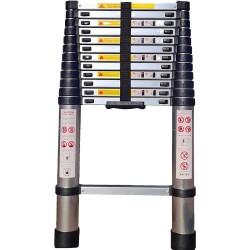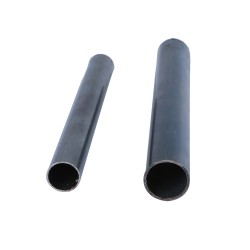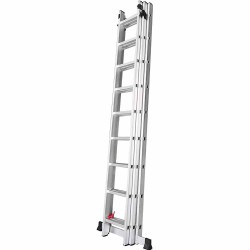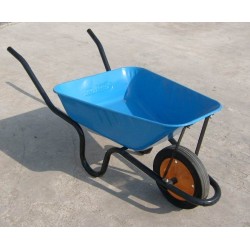
Over the past few years, the metal industry has seen its fair share of challenges. The rising prices of raw materials and transportation costs have made it difficult for many metal manufacturers to maintain profitability. In addition, supply chain disruptions caused by the COVID-19 pandemic have rippled across the country — leading to factory closures, workforce shortages, and shipping delays.
Despite these difficulties, the metal industry is expected to rebound in the coming years as the global economy recovers and new opportunities arise. In this blog, we’ll explore some of the key predictions for the future of the metal industry and provide valuable insight into new technology, changing consumer preferences, and evolving global trends.
CONTINUED GROWTH IN EMERGING MARKETS
Emerging markets such as China, India, and Brazil are expected to continue driving demand for steel and other metals in the coming years. This is due to several factors, including population growth, urbanization, and infrastructure development.
As these economies continue to industrialize and build new infrastructure, there will be a growing need for steel and other metals to support construction projects, such as buildings, roads, and bridges.
Metal growth statistic
While this growth points to a positive future for the metal industry, it also introduces a new set of challenges — such as the need for sustainable production methods to minimize the environmental impacts.
INCREASING FOCUS ON SUSTAINABILITY
The metal industry has increasingly focused on sustainability in recent years, with a growing awareness of the environmental impact of metal production. As such, the sector will likely continue prioritizing sustainable production methods, reducing environmental impacts, and recycling materials to meet the growing demand for eco-friendly products.
One way the metal industry is addressing sustainability is by reducing its environmental impact through cleaner production methods. This means finding ways to reduce waste and pollution generated during production processes, such as minimizing emissions of greenhouse gasses and other pollutants.
Another key approach is recycling materials. By recycling metals, the industry can reduce the amount of raw materials it needs to extract from the earth — which can be a significant source of environmental harm. Recycling metals also reduces the waste that would otherwise end up in landfills or other disposal sites.
TECHNOLOGICAL ADVANCEMENTS
Like other industries worldwide, the metal manufacturing sector is undergoing a digital transformation. With the use of automation, artificial intelligence (AI), and the Internet of Things (IoT) — the industry is predicted to see improved efficiency and reduced costs. Mead metals employee working
“As the global economy continues to develop and new technologies emerge, how manufacturers do business must also change to keep up with demand. Though there will always be a market for traditional products and services, new technologies are creating new industries and thriving niches in the global marketplace altogether. ” - The Metal Fabrication Industry is Undergoing a Digital Transformation, David Manney.
Automation can take over repetitive tasks, freeing up workers to focus on more complex and creative tasks. AI can analyze data and make informed decisions, while the IoT can monitor machines and devices in real-time to prevent equipment failure and optimize production. This technology will not only increase efficiency and reduce costs, but also improve the quality of products and enhance customer satisfaction!
SUPPLY CHAIN DISRUPTIONS
The metal industry has always been vulnerable to supply chain disruptions, raw material price fluctuations, and trade disputes. The COVID-19 pandemic, for instance, caused unprecedented disruptions in global supply chains — leading to shortages of raw materials, transportation bottlenecks, and factory closures. Even before the pandemic, trade disputes between major global economies like the US and China have resulted in trade barriers, making it harder for companies to import raw materials or export finished products.
These challenges are likely to continue in the future, as geopolitical tensions, natural disasters, and economic uncertainties remain a constant threat. Therefore, companies operating in the metal industry must be agile and adaptable to changing market conditions.
HOW MEAD METALS STAYS AHEAD OF THE CURVE
Over the past 60 years, Mead Metals has seen our fair share of supply chain disruptions and economic fluctuations. Because of this, we have adopted a proactive approach to risk management and source management. By diversifying our supplier base and relying on various sources for raw materials, we have successfully minimized the impact of supply chain challenges to remain competitive through the ebbs and flows of the market.
-505x159.png)




43 Comment(s)
I must say, the Journal Blog is a fantastic addition to an already outstanding theme. Keep up the good work guys, it's amazing what you come up with for the Opencart community.
Super Theme, I'm going to buy it for my handmade jewellery store.
Lorem ipsum dolor sit amet, consectetur adipiscing elit. Aliquam iaculis egestas laoreet. Etiam faucibus massa sed risus lacinia in vulputate dolor imperdiet. Curabitur pharetra, purus a commodo dignissim, sapien nulla tempus nisi, et varius nulla urna at arcu.
Design and Ad's
you have got a excellent weblog here! want to develop invite posts on my weblog?
An interesting discussion might be priced at comment. There’s no doubt that you should write more about this topic, it will not certainly be a taboo subject but typically people are not enough to communicate in on such topics. To another location. Cheers
Thanks so much pertaining to giving me an update on this subject on your website. Please understand that if a completely new post becomes available or in case any improvements occur on the current submission, I would be interested in reading more and knowing how to make good using of those strategies you talk about. Thanks for your time and consideration of others by making this web site available.
Valuable info. Lucky me I found your site by accident, and I’m shocked why this accident did not happened earlier! I bookmarked it.
Valuable info. Lucky me I found your site by accident, and I’m shocked why this accident did not happened earlier! I bookmarked it.
We provide support for those looking for 'Take my GED for me' or 'Take my TEAS exam' solutions. Need help with your GED or TEAS exam? We offer services so you can pay someone to take your GED or TEAS exam, hire someone for exam assistance and solutions.
Are you looking for who will 'Write My Dissertation For Me?' We provide support for those looking for 'Dissertation Writing Services' or 'Dissertation Help'. We offer services so you can 'Pay Someone To Do Your Dissertation'.
Seeking a reliable SEO company in Stockholm for SEO optimization, online marketing, website design, Google Ads management, Social Media, USA, UK, Australia, UAE.
Quran Online Teaching with Tajweed regardless of your location with our experienced Quran teachers online. Book free trial!
Le code promo 1xbet: 1XFOX200. Ce code vous bonus de bienvenue jusqu'à $130 sur les paris sportifs. Ce code de parrainage 1XBET 2025 offre un bonus exclusif destiné à parier ou à jouer au casino. Avec ce code, 1xBet propose un bonus de bienvenue sur les paris sportifs pouvant atteindre 130 $ sous forme de paris gratuits. De plus, un bonus de casino est disponible jusqu'à 1 500 $ ainsi que 150 tours gratuits.
I think your blog is getting more and more visitors.*;~::
This internet site may be a walk-through its the data you wanted in regards to this and didn’t know who must. Glimpse here, and you’ll absolutely discover it.
I would like to thank you for the efforts you have put in writing this site. I am hoping the same high-grade web site post from you in the upcoming also. In fact your creative writing skills has inspired me to get my own website now. Actually the blogging is spreading its wings rapidly. Your write up is a good example of it.
Youre so cool! I dont suppose Ive read something such as this before. So nice to seek out somebody by incorporating authentic ideas on this subject. realy i appreciate you for starting this up. this excellent website are some things that’s needed online, somebody after a little bit originality. helpful work for bringing something new to the web!
This is great content. You’ve loaded this with useful, informative content that any reader can understand. I enjoy reading articles that are so very well-written.
Thank you so much for giving my family an update on this issue on your web-site. Please realise that if a brand new post appears or if perhaps any adjustments occur to the current post, I would be interested in reading a lot more and focusing on how to make good use of those strategies you reveal. Thanks for your efforts and consideration of other people by making this web site available.
It is actually a great and useful piece of information. I’m satisfied that you just shared this useful info with us. Please keep us informed like this. Thank you for sharing.
I really delighted to find this internet site on bing, just what I was searching for : D too saved to fav.
The following time I read a blog, I hope that it doesnt disappoint me as much as this one. I imply, I know it was my choice to read, however I really thought youd have one thing fascinating to say. All I hear is a bunch of whining about something that you could repair if you werent too busy in search of attention.
I’m honored to obtain a call from a friend as he identified the important tips shared on your site. Browsing your blog post is a real excellent experience. Many thanks for taking into consideration readers at all like me, and I wish you the best of achievements as being a professional domain.
Sugar Defender is a liquid dietary supplement marketed to support healthy blood sugar levels through a blend of plant-based ingredients.
MazgTV deserves way more recognition. I’ve used many sites over the years, but none come close to the quality and reliability of this one. Please don’t stop what you’re doing!
Hello, this weekend is good for me, since this time i am reading this enormous informative article here at my home.
Easily this fabulous website may perhaps irrefutably be well-known within many blog persons, a result of the conscientious articles or reviews or perhaps opinions.
Wow Da weiss man, wo es hingehen muss Viele Grüsse Mirta
And Im running from a standard users account with strict limitations, which I think may be the limiting factor, but Im running the cmd as the system I am currently working on.
I am often to blogging we truly appreciate your posts. Your content has really peaks my interest. I am about to bookmark your web site and maintain checking achievable details.
Thank you for every other excellent article.
The sleek and modern design of the VR equipment not only attracts attention but also complements the aesthetics of any entertainment venue.
Oh my goodness! a tremendous article dude. Thanks Nonetheless I’m experiencing challenge with ur rss . Don know why Unable to subscribe to it. Is there anyone getting similar rss drawback? Anyone who knows kindly respond. Thnkx
I really appreciate this post. I¡¦ve been looking everywhere for this! Thank goodness I found it on Bing. You’ve made my day! Thanks again
I appreciate how op사이트 순위 balances user and expert opinions.
This is my third time ordering and once again, everything arrived quickly and in perfect shape. I always feel confident buying from here – great products and trustworthy service.
Using opstar has simplified my workflow tremendously.
신용카드현금화 helps people avoid borrowing from multiple sources.
리더십 교육 empowers you to lead with empathy and vision.
I've been pleased with the speed of 다바오 머니상 transactions.
Nice post. I understand some thing more challenging on different blogs everyday. It will always be stimulating you just read content off their writers and employ a little something from their website. I’d choose to use some with all the content on my small blog whether you don’t mind. Natually I’ll offer you a link with your web weblog. Thank you for sharing.
<a href="https://altafouq-almathali.com/%d8%b4%d8%b1%d9%83%d8%a9-%d9%85%d9%83%d8%a7%d9%81%d8%ad%d8%a9-%d8%ad%d8%b4%d8%b1%d8%a7%d8%aa-%d8%a8%d8%a7%d9%84%d8%af%d9%85%d8%a7%d9%85/">شركة مكافحة حشرات بالدمام</a>
We’re currently evaluating the Jelly Candy Production Line on Yinrich’s website. The process automation and PLC control seem top-notch, and the sanitation design is exactly what our QA team demands. It looks promising!
Leave a Comment